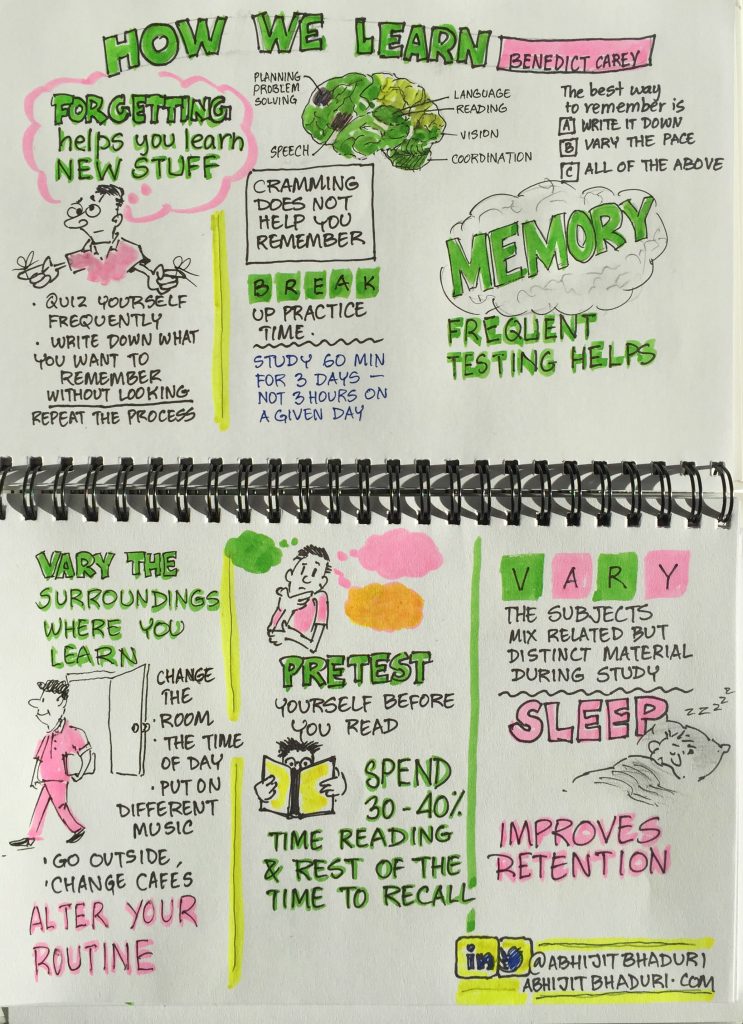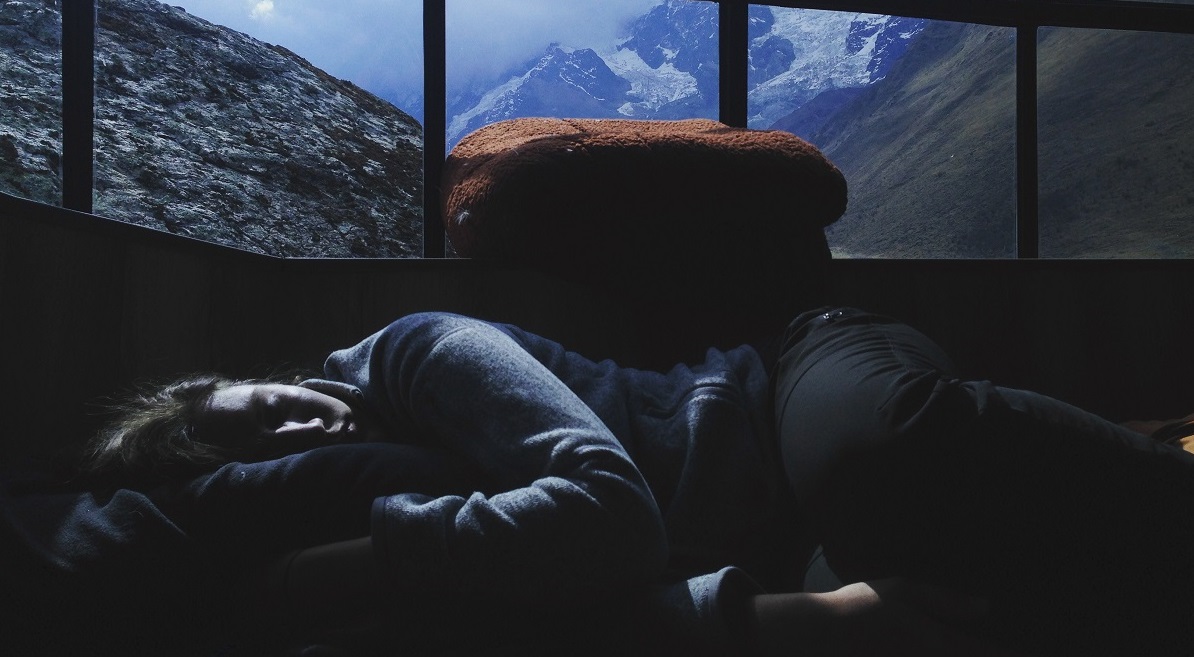Thanks to Clark Quinn’s article Two good books on learning, I decided to read one of his recommendations: Benedict Carey’s How We Learn. It turns out the book is quite focused on the way students learn in school, and on a brain focused cognitive science view of learning.
Benedict divides his book into four sections:
- The cognitive basis of learning, based on how the brain works.
- Techniques to help us hold on to facts better.
- Comprehension techniques to turn facts into useful tools in our daily lives.
- How to use the subconscious to support learning even better, such as by sleeping (causing the image choice in this post).
Regarding the tips the book covers, Abhijit Bhaduri made an excellent overview in The Times of India:

These are all tips and tricks we can test on school children. For example, start by launching the final test and let them fail at it. Then follow up with training on the things they failed at by using spacing in time with flash cards to regain from dips in the forgetting curve, changing the surroundings, and getting good nights sleep. Here is a rather typical quote from the book with an example of how to learn German:
The optimal schedule is the following: Three hours on Day 1. Three hours on Day 8. Three hours on Day 14, give or take a day. In each study session, we’re reviewing the same material. On Day 15, according to the spacing effect, we’ll do at least as well on the exam, compared to nine hours of cramming. The payoff is that we will retain that vocabulary for much longer, many months in this example. We’ll do far better on any subsequent tests, like at the beginning of the following semester. And we’ll do far better than cramming if the exam is delayed a few days. We’ve learned at least as much, in the same amount of time—and it sticks.
For corporate settings, I think some of these ideas are a match. For example, try to avoid cramming in full-day sessions, allow breaks to do something completely different, use mobile learning apps to remind people between course days, and teach them how to sleep well. And of course, if you are studying for a formal test at work, by all means, try these techniques.
What I would like to complement this book with, is other views of how we create new knowledge and learn things. Just to name a few examples (there are for sure many):
- Harold Jarche’s Personal Knowledge Mastery (PKM) can help individuals make sense of the world and become knowledge catalysts in their networks via work teams, communities of practice, and social networks.
- Etienne and Beverly Etienne-Trayner emphasize social learning and communities of practice, for example in this introduction movie (including 80’s hard rock riffs for some reason).
- Jane Hart and her books and reports on social learning and modern workplace learning teach us how to make learning a part of our daily work.
- Ryan Tracey continues to develop the 70:20:10 framework to highlight that it is not a recipe -it is more an image of what already happens at work.
So, instead of seeing this as a debate between cognitive science and social learning, I think they can complement each other also in professional settings. We do have a brain, and the better we learn how to use it, the better we can store, categorize, retrieve, and use things we have learned and experienced. Meanwhile, we are no Robisonados living on isolated islands. Who we learn with and how can be central to our success and we not only learn from collaborating in teams – we learn even more by reaching outside our teams (thanks Donald Clark for the link).
Photo by Maeghan Smulders on Unsplash.
